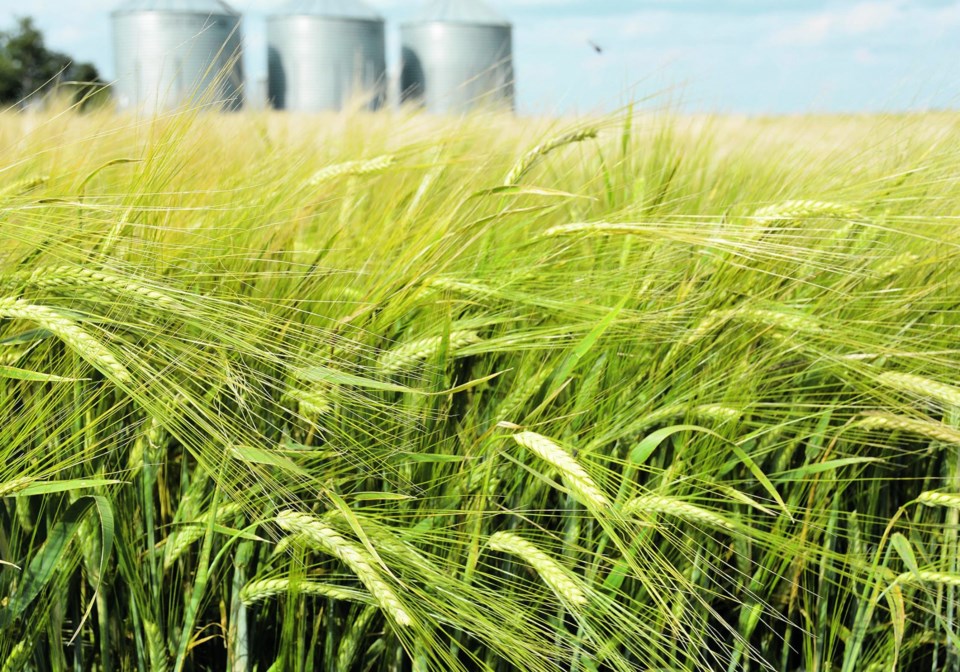WESTERN PRODUCER — When broker David Derwin heard Donald Trump twice invoke “drill baby, drill” in his acceptance speech at the Republican national convention, he worried about what that might mean for western Canadian farmers.
“Given the growing influence of oil on renewable fuels and therefore oilseeds, ‘drill, baby, drill’ is not supportive of canola,” said Derwin, a futures and options broker with Vento Capital.
Crude oil is one of the “outside markets” that analysts see as having an important — and these days, direct — impact on crop and livestock prices. Farmers often focus on agricultural markets when trying to assess the outlook for their crops and livestock, but analysts place ag commodities within a broader commodities complex, which in turn sits within even wider financial and geopolitical influences.
Much as canola’s price range depends upon the vegetable oil complex and wheat and barley are shackled to U.S. corn values, ag commodities are heavily influenced by interest rates, investment flows and global trade disruptions.
Stephen Nicholson, Rabobank’s global sector strategist for grain and oilseeds, believes foreign exchange rates, crude oil values and investment flows will have significant effects on crop and livestock values in the next year.
For instance, if oil prices pop higher, that could be bad for grain transportation.
“With oil prices going up, and (the potential of a lot) more transportation of oil (on rail in Canada,) that’s bad for agriculture,” said Nicholson in an interview at Ag in Motion.
That would likely lead to worse basis levels for farmers because crop shippers need to bid aggressively to secure space on the rail lines this fall and winter.
Crop prices are currently suppressed by a major net short futures position held by commodity speculators, which Nicholson said doesn’t show much sign of immediately reversing.
As Reuters reported July 15, “speculators last week established record net short positions in both Chicago corn and soybean futures and options as prices tumble further amid ample supply outlooks.”
A significant short-covering rally is likely if something spooks those investors and they begin closing or reversing those short positions.
“That could come back roaring very quickly as they pull out of their shorts,” said Nicholson.
Interest rates and currency values will also likely affect overseas demand. North American currencies are relatively strong, especially the U.S. dollar, which makes world prices for crops seem expensive to most buyers because they are priced in greenbacks, Nicholson said.
Geopolitical influences are also –°¿∂ ”∆µ keenly watched by analysts assessing the commodities complex outlook. The Houthi attacks on shipping through the Red Sea have disrupted much commodity traffic, forcing massive re-routings of trade away from the conflict. The Ukraine war is making the outflow of agricultural and other commodities through the Black Sea unpredictable.
Sanctions on Russia for its invasion of Ukraine have caused major shifts in oil, gas, metal and agricultural commodities as Russia is forced to shift sales to friendly states such as China and India and away from Europe.
For farmers, the vast size of the global market can make a mockery of local supply and demand factors. That’s true even within the North American crops market.
Farmers in Alberta and Saskatchewan have little barley left in the bin. As Statistics Canada noted in its July 22 report, stocks are expected to fall to 0.65 million tonnes.
“If realized, this will be the second-lowest stocks ever.”
At the same time, prices have been falling, averaging $315 per tonne for 2023-24, down $100 per tonne from 2022-23. Worse for growers, feed barley stocks are expected to fall further in 2024-25 while prices also fall.
“The Lethbridge cash feed barley price is forecast at $290 per tonne, down $20 per tonne year over year and the lowest level in five years,” says StatCan.
How can western Canadian barley prices be falling with stocks also falling?
“This is just a readjustment of the whole commodities complex,” said Jim Beusekom of Market Place Commodities, a significant player in Alberta’s feedlot alley.
Regardless of barley –°¿∂ ”∆µ in low supply near cattle feeders, there is a mountain of corn south of the border, with big crops almost certain in North Dakota and other nearby states.
As soon as barley gets too pricey, feeders are likely to switch to corn, Beusekom said.
To market barley effectively, farmers need to understand those North American dynamics. For canola growers, understanding crude oil is becoming ever more important as it becomes a central biofuel component.
And whatever happens with western Canadian weather and harvest conditions, the impact of global interest rates, foreign exchange, investment flows and world conflict might end up –°¿∂ ”∆µ even more important. It’s a global market, and farmers are in the middle of it.
Related
About the Author




